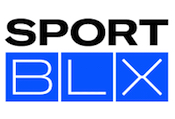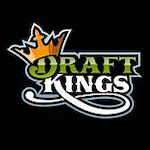|
|
As we approach Super Bowl 50, public relations firms should use the 2015 Super Bowl as a case study in how the best planned marketing campaigns can easily fall apart because there are many lessons learned from the National Football League’s “Debacle in the Desert."
Below are a few:
If there’s one lesson that the N.F.L. should learn, but probably won’t, it is that its logo is not as popular as its ballplayers and that lesson was provided by Seattle Seahawks running back Marshawn Lynch. Lynch last year wore a hat with his “Beast Mode” logo at the league’s media events. Despite not having the N.F.L.’s seal of approval, the hat quickly sold out. Now the N.F.L. has to find other ways to protect its sponsors and shield.
Maybe the N.F.L. should hire Marshawn Lynch for advice before making media statements. Every time the N.F.L. made a statement about “Deflategate,” it was ridiculed by the media. Lynch said nothing in his pre-game media appearances last year but never-the-less received more positive media attention than the N.F.L.
The feds aimed slings and arrows and the N.F.L. shield couldn’t stop them: Just a few days before the Big Game, Sen. John McCain criticized the N.F.L.’s response to the Ray Rice domestic abuse episode and “Deflategate.” That’s not good news for the N.F.L. which is now receiving negative press because of the fantasy sports government investigations, and the release of the movie Concussion and the book of the same name.
Major League Baseball, the National Basketball Association, the International Olympic Committee, the National Hockey League and all sports organizations should use the N.F.L.’s handling of its PR crises in a master class of how not to handle a crisis. So should PR “crisis specialists” in our business.
TV sponsors should keep in mind that they cannot count on receiving free publicity because a juicy scandal is more newsworthy than a paid ad, despite its cost, proving that money spent on Super Bowl TV commercials doesn’t always talk.
For the second year in a row, the Super Bowl received criticism from Mayors in surrounding communities, (question: is the N.F.L. trying to emulate the IOC?) proving that like the Olympics, the N.FL. is tone deaf to anything but the ringing of cash registers.
Marshawn Lynch’s wearing of his unauthorized “Beast Mode” logo hat received more publicity than N.F.L. official sponsors’ efforts, showing the value of ambush marketing.
The investigation of “Deflategate” was the second time in a few months that the N.F.L. used an outside law firm to investigate a crisis, ironic for a league that for decades was mute when its players broke the law.
If some people thought that the N.F.L. airing a domestic violence ad during the game shows the hypocrisy of the league and some team owners, who said that they didn’t realize the serious of the problem until the Rice incident, who can blame them?
Super Bowl media day should be renamed Stupid Bowl Media Day given the inane questions asked by some of the media and the lack of serious answers to questions by the players.
The antagonism shown between some players toward the N.F.L., when players are mandated to speak to the media, shouldn’t be surprising as it mirrors the resentment of employees to employers in many businesses because of how they are treated, PR particularly included.
Funny how some of the same media – but not the New York Times – that trashed Roger Goodell for his handling of sexual abuse incidents on a Monday, says nice things about his new approach to the issues on Tuesday, ignoring his many years of silence on the issue since he became commissioner. Ditto concussions.
The day after the Big Game a USA Today columnist credited the N.F.L. for “finally beginning to shine a light on the dark secrets of domestic violence,” pointing to a commercial during the game. She must have forgotten that domestic violence has been a much publicized problem for decades? No wonder the media is held in lower esteem than even PR and advertising people.
A few personal thoughts:
During his State of the League presser, Commissioner Goodell said that the sexual abuse issues raised by the Rice incident was a wake-up call to him and the league about how serious sexual abuse is in our society, even though the problem has received widespread news coverage for decades. The same response was given earlier by New York Giants President John Mara and Pittsburgh Steelers President Art Rooney II. Unbelievable that these obviously intelligent businessmen would say that they didn’t know the seriousness of the problem until the Rice episode. Where do they live? In the red zone? The locker room? Have they no shame? (Good biz opportunity for media training people.)
Why do football writers make such a big deal about Marshawn Lynch refusing to speak to them? There are plenty of other players who were willing to give answers devoid of any news that if it was included in a PR press release would be spiked as being unnewsworthy. And those few players who make what the football writers consider controversial remarks have their own agenda.
Mom & Pop Alert! Perhaps it’s time for the N.F.L to be covered by business and health reporters, instead of sports junkies. Receiving scant coverage were stories about the tax breaks and subsidies the teams and league receives. Also receiving limited coverage are the health risks associated with the game, even though just three days prior to the Super Bowl, the New York Times published a story based on an article in Neurology, the medical journal, that said N.F.L. players who began playing tackle football when they were younger than 12 years old had a higher risk of developing cognitive problems than those who began playing when they were older.
Marketing writers make a big deal about the promotional efforts of companies associated with the Super Bowl. Missing are the follow-up stories about how effective the promotions were in driving sales. Wonder why?
For years, I’ve been saying that opening the vault for Super Bowl commercials might not be as prudent as using the money for a more targeted ad campaign throughout the year. On Jan. 18, 2016, a Times story reportedthatsince 2010, celebrities have starred in a third of Super Bowl ads but the commercials were flops when viewers didn’t connect with the endorsers. Readers of this Web site might remember that I’ve also written more than once, about telling clients to consider promotions that do not need celebrity spokespeople or are not connected to sports, especially mega sports. This, obviously, is a lesson ignored.
The glorification of players with criminal pasts, team owners, coaches and the N.F.L. commissioner, who pressed the mute button while the brains of players were scrambled, is a stain on journalism.
As usual in these mega-sporting events, a well planned ambush marketing campaign will get more publicity than official sponsors receive, and at a substantially lower cost. Probably because they’re more creative than the usual hum drum.
As someone who has been to several Super Bowls (on client business, of course), going to the parties can be fun. But if you want to see the football game you’re better off watching it at home, where replays show various details of a play that a person in the stands cannot see without what else? – a large TV screen. My yearly plan? Take the first plane out on Sunday mornings, after my PR work is finished, so I could watch the game in the comfort of my home that evening and attend to other things during the never ending number of extra time outs for overhyped (ineffective?) commercials.
Very few people believe, except fanatics and some football media, anything the league says, based on its statements regarding spousal abuse and concussions over the years.
What should a program featuring about 48 minutes of TV commercials be titled? Oh, yes: the Super Bowl. So below are some take-a-ways from the 2015 ad game.
Anheuser-Bush, which has seen its share of the beer market falling despite its continuous advertising on the Super Bowl, proves that just because marketing media and consumers go ga over the horse/dog ads doesn’t mean they’ll buy the product. (Which raises the question of the effectiveness of other ads on the Super Bowl.)
No matter what one might think of the Nationwide ad, it certainly accomplished two things that the other ads didn't. 1- It cut through the clutter of commercials and 2- people were talking about it for days after the game and the lead-up to the 2016 event, remembering that it was a Nationwide ad. Not easy to do in a commercial ad episode show interrupted by a football game.
On February 2, 2015,, the Wall Street Journal ran a story about specific target venues other than the Super Bowl that marketers might have used for their $4.5 million for a :30 commercial. If marketers didn’t read it, they should. Oh, what the heck. They’ll ignore it anyway.
Two very important Lessons Learned that people in our business should remember, especially star-struck PR agency personnel:
- Fame is fleeting, and nowhere was it better illustrated than in the closing half-minute of the Super Bowl. The Seattle coaches were being celebrated as geniuses and the New England coach and quarterback’s efficacy in Super Bowls were being questioned until the Big Play materialized. In a split second, opinions were reversed.
- Another important lesson that clients should remember: The harsh press about the N.F.L, even at their Big Bash, again proved the inability of PR “crisis experts” to lessen negative media coverage. Oh, what the heck. They’ll ignore it anyway.
- Sponsors and the N.F.L. brass couldn’t have been thrilled that the week prior to the championship games, talk radio in the New York market was more interested in who would sign Yoenis Cespedes, a baseball player, than the supposedly dream match up between Peyton Manning and Tom Brady. (The Cespedes situation also was heavily covered in the Washington, D.C. market.)
For those of you who feel that there is more to a Sunday than watching about nearly an hour of commercials interrupted by about 11or 12 minutes of actual football play, there is very good news: Beyonce will be back in the 2016 half-time show.
But prior to what will probably be the most viewed facet of the overloaded commercial-hyped football game, Beyonce‘s performance, the N.F.L. will hold another of its lame PR initiatives – the Women’s Summit on Feb. 4 and 5. “A panel discussion ‘Media, Entertainment and Sports as a Platform” will be the highlight. I can assure you that missing will be the subject telling mothers how to prevent their sons from having their brains scrambled, along with preventing other serious football injuries. Suggestion: A screening of the movie “Concussion” would suffice.
Oh, yes. The 2015 game was a very good one but it probably mattered little to people in the PR and ad business because the only thing concerning them was if the client was happy about their efforts. Important Advice: Don’t ask the client.
* * *
Arthur Solomon, a former journalist, was a senior VP/senior counselor at Burson-Marsteller, and was responsible for restructuring, managing and playing key roles in some of the most significant national and international sports and non-sports programs. He now is a frequent contributor to public relations publications, consults on public relations projects and is on the Seoul Peace Prize nominating committee. He can be reached at [email protected]



 Brunswick Group handles Endeavor, which has launched a review of strategic alternatives at the sports and entertainment combine as CEO Ari Emanuel believes Wall Street undervalues his company.
Brunswick Group handles Endeavor, which has launched a review of strategic alternatives at the sports and entertainment combine as CEO Ari Emanuel believes Wall Street undervalues his company. MWWPR has been retained by SportBLX to lead communications for the launch of a platform that allows fans and investors to own shares of unique assets in sports.
MWWPR has been retained by SportBLX to lead communications for the launch of a platform that allows fans and investors to own shares of unique assets in sports. DraftKings is betting on Donald Trump-connected Ballard Partners to help it achieve its economic development and regulatory relief goals in Washington. (1 reader comment)
DraftKings is betting on Donald Trump-connected Ballard Partners to help it achieve its economic development and regulatory relief goals in Washington. (1 reader comment) On November 15, “Ford v Ferrari” will roar into theaters, packing a publicity boost for two great global auto brands right on the marquee. Here's a Top Ten list of films in which a brand played a starring role. (1 reader comment)
On November 15, “Ford v Ferrari” will roar into theaters, packing a publicity boost for two great global auto brands right on the marquee. Here's a Top Ten list of films in which a brand played a starring role. (1 reader comment) Steven Spielberg’s Amblin Partners has brought on Dan Berger as executive vice president and head of communications.
Steven Spielberg’s Amblin Partners has brought on Dan Berger as executive vice president and head of communications.


 Have a comment? Send it to
Have a comment? Send it to 
No comments have been submitted for this story yet.